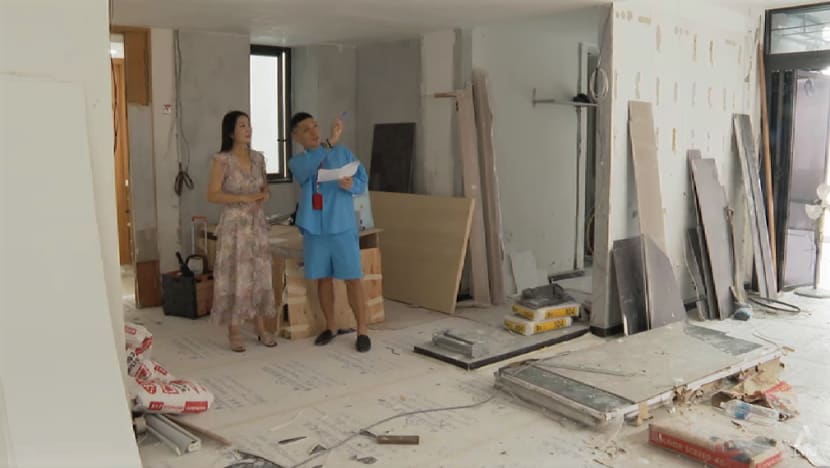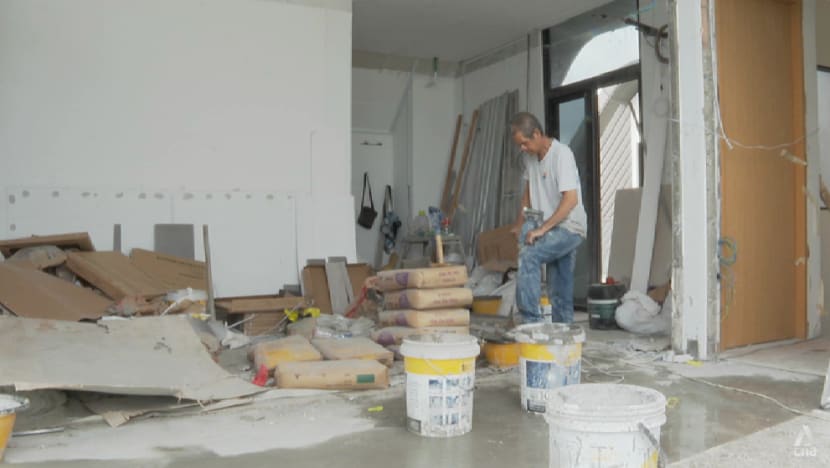Some home owners in Singapore turning to renovation apps to save on costs
Renovation works are likely to get more expensive as the cost of labour and materials rise, said industry players.

Renovation works are expected to get even more expensive as the cost of labour and materials rise, said industry players.

This audio is generated by an AI tool.
SINGAPORE: Some home owners are using web renovation applications to cut some middleman fees and save on costs, which have climbed about 20 per cent in last year.
These apps, which allow users to connect directly with suppliers, are becoming more popular.
This comes as renovation works are expected to get even more expensive as the cost of labour and materials rise, said industry players.
CUSTOMERS FEELING THE PINCH
For Ms Shermaine Sng and her husband, saving money was an important consideration when renovating their four-room Build-to-Order (BTO) flat.
After three interior design firms quoted about S$80,000 (US$59,700) for the works, they decided to do it themselves using a renovation app.
“The goal is to save costs. We wanted to see how we can minimise the spending on our house,” said Ms Sng, who spent about S$35,000 on the renovation.
"We did a mock-up of our house and then it generated a quote based on the mock-up. We were just in the comfort of our own house, just adding and removing stuff, and I think that helped a lot in making it more of an enjoyable experience for us.”
Renovation app Homeez said it sees at least 200 new users per week.
Through the platform, users can select a pre-loaded floor plan, decide on their tiles and paints, and contact the suppliers directly or hire a project manager. At every step, they are informed of the price they have to pay.

Homeez CEO Tyson Lim said the app gives users options on whether they would like to oversee the works themselves or choose freelance project managers that they want to work with, which they can pay a one-time fee for.
“So for example, we do have some freelance project managers that charge maybe S$5,000 for managing a five-room flat,” he added.
“The home owners are in control of the money and paying out to the suppliers directly, rather than the money flowing into an interior design firm … where a lot of unnecessary middleman fees are from there. So why not just get them to pay directly to the professional managing the project?”
Consumers are able to spend less because there is no interior designer nor salesperson involved, said Mr Lim, who has been in the interior design line for the past 10 years.
“Conventionally, interior designers earn through a mark-up scheme, rather than a one-time fee,” he added.
“So if the cost (that) comes from a carpenter is S$100, they have to sell at maybe S$120 to S$150.
“That’s where their margin comes about. So when you compare the quotations, you realise quotations vary right there.”
Another web app Design Plus tracks the progress of the works and ensures consistent communication between home owners and contractors.
It hopes to save around 40 per cent of costs incurred through delays and rectification work.
“On average, renovation for an HDB apartment can consist of up to 50 different key persons, or 50 different contractors or suppliers. Designers will need to manage this amount of people and ensure everybody gets the same (and) correct information, avoid doing wrong things, and deliver quality work,” said Mr Zoron Koh, creative director at Design Plus.
“With technology, we are able to enhance the workflow. Therefore, we can address issues like ineffectiveness, high renovation costs, job delays and miscommunications.”
INTERIOR DESIGNERS STILL RELEVANT
However, observers believe interior designers will still be relevant.
Designers can advise clients on the latest trends and materials needed for certain works, they said. Experience is also crucial, especially in problem solving when things go wrong.
The Singapore Renovation Contractors and Material Suppliers Association, which oversees the renovation industry, said that most home owners still prefer a human touch.
Ms Gena Thien, the association’s director, said “the nature of renovation is that sometimes, there are unforeseen circumstances”.
She added: “(If home owners) do choose to go direct, they might be at the risk of being stuck with certain renovation details because after all, not everyone is in the trade or (there are) certain renovation engagements or fine print they might not be clear of. So they really have to look out for this.”
Ms Thien stressed that it is important for home owners to choose a certified renovator and ensure that what they see digitally translates to real life.




















